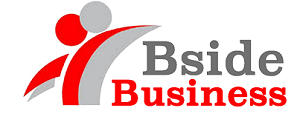Quick Guide To PCB Manufacturing – A Simple Resource For Designers

To many manufacturers of consumer electronics, printed circuit boards (PCBs) are the most important parts of a product. The prototyping of PCBs is also essential. This quick and simple guide to PCB manufacturing is a resource that was created to help guide you through the steps and processes taken in printed circuit board manufacture. It’s a ‘simple’ overview of the process and might be useful if you’re moving from a prototype to a production run or are looking for information about the materials used.
PCB Manufacturing and Materials
There are two main processes in printed circuit board manufacturing: Cutting the PCB die and assembling the PCB die. The ‘Die’ is the motherboard printed circuit board’s backbone, so it’s one of the more important elements of the manufacturing process. The die may be as small as 30 mm (1.18 inches) square and is the part that holds the PCBs together and is printed on with ink or reactive dye. The PCBs are secured to the die with flanges, wafers, or flexible mounts. Die ‘wear’ is assessed, and they may be upgraded to make them more reliable or better performing. Cutting the PCB board is the biggest part of the manufacturing process and probably one of the most time-consuming.
Pick Your Design
First, you have to select a design. The process of PCB production involves cutting shapes with the BGA or DIP processes. You need to pick a component called a chip or wafer that you want to be on your printed circuit board. The basic requirements for a PCB are that it should be capable of holding a minimum of 10 pads and be printed on a layer of plastic. Pads on a PCB are produced using the same process used to create a layer of plastic on a topographic substrate. This means that a thickness of approximately 1mm is typical. It’s very easy to make pads on a plate of copper wire (an inch or so) using the same process used to make an etched circuit board. In fact, all the components that go on a circuit board are made of the same material — a substance called copper.
Upload PCB Design Files
You will need to upload your designs to a PCB manufacturer. Simply upload your CAD files to one of the online PCB makers, which will enable them to convert them into PCB board layouts. Connect Your Firmware to Your PCBs Once your designs are available, and you can send them to a manufacturing company for PCB manufacture. In some cases, you’ll need to send your PCBs to a PCB maker for certification. This is usually to be done by including certification documents such as barcodes and details of test standards on the PCB. Hopefully, this guide to PCB manufacturing helps you find a better manufacturer for your needs.
Confirm BOM and Prototypes
Before committing to the production of PCBs, you should confirm the parts and materials you need to fulfill your customer’s order and sample the design to confirm that it is complete. Make sure the design is marked up according to your specification and communicate with your customer if any changes need to be made. This will allow you to size your PCB based on the requirement and ensure that there is a sufficiently large gap between the parts on the board. Some customers may wish to order a revised sample to further validate the layout. 3.2 Order PCBs In the example below, the order contains the PCBs and other components to make the sample.
Quick Overview: What is a PCB?
Let’s first define what PCB stands for. A printed circuit board (PCB) is a piece of chipboard (cardboard) or polyurethane (PU) soldered to a substrate (plastic) and covered with conductive epoxy solder that is less common today. In most modern fabrication shops, you will see a simple board with a long narrow range of insulating material soldered on each long side. Usually, the size of the board is slightly larger than the surface it is soldered to, and typically, it has a number of connectors at the corners, ensuring efficient cable management and ease of replacement. A PCB is made of many parts. In addition to the printed circuit board itself, the front panel and back panel must be metal-coated to prevent corrosion.











